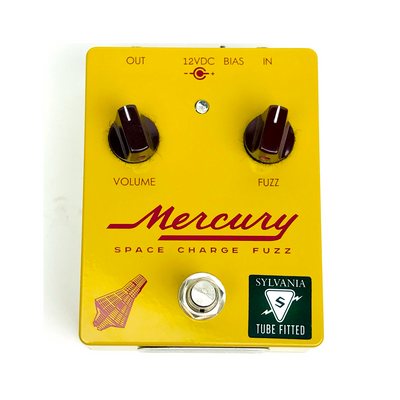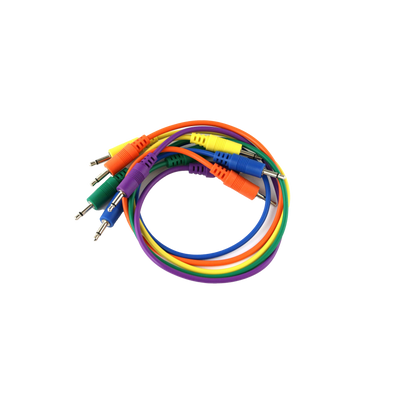Analogue Systems RS-20 Ring Mod and Multiple
Analogue Systems RS-20 Ring Mod and Multiple
Couldn't load pickup availability
Ring Modulator and Multiple
- 6 hp
- 2 inches Depth
- 10 ma +/-12V
INTRODUCTION
There are two types of ring modulator (RM) used in audio synthesis: AC-coupled, and DC-coupled. These are alternative configurations of the same device, but will often produce different results from the same inputs.
The AC coupled device is the most common. Simply described, this accepts the input of two sources with frequencies X and Y, and outputs a single signal with component frequencies: X+Y and X-Y. The original signals are suppressed, so you only hear these "sum" and "difference" frequencies.
The frequencies contained in the new signal will rarely be harmonically related, so ring modulation is well-suited to producing clangorous and metallic tones. If the inputs are harmonically rich the output will be a complex waveform, often harsh, and possibly unusable for all but sound effects.
The output from a DC-coupled RM is more complex than that produced by an AC-coupled device, and contains the original frequencies X and Y as well as the sum and difference frequencies X+Y and X-Y.
If one of the inputs is an LFO, an RM acts as a voltage controlled amplifier, and the amplitude of the output signal will be proportional to the instantaneous voltage of the low frequency signal. This has a surprising consequence: if the LFO is a pulse wave, the output will be rhythmic and syncopated at the pulse wave ratio.
Some synthesisers offer switches that allow you to select between AC-coupled and DC-coupled operation. The ARP2600 is one example of such an instrument.
A popular use for ring modulators may be demonstrated if you use a human voice as one input and a frequency of, say, 100Hz, as the other. The classic "Dalek" timbre results.
IN USE The RS-20 incorporates a high quality AC-coupled ring modulator that sounds somewhat different to the RMs in synthesisers such as the ARP2600, Roland System 100M, and EMS VCS3. This is because these three instruments (and many others) use the same ring modulator chip: the LM1496. The RS-20 is an altogether different design that offers accurate ring modulation over a wider range of frequencies and amplitudes. It offers two inputs and one output. There are no controls.
X-IN Accepts any signal with maximum amplitude +10V.
Y-IN
Accepts any signal with maximum amplitude +10V.
OUT
Outputs the results of AC-coupled ring modulation. The new signal will have a maximum amplitude of +10V.
Multiple
The RS-20 also incorporates a passive "multiple" with four interconnected input/output sockets. These are hard-wired together and may be used to distribute any audio signal or CV to multiple destinations. This multiple may be used as a simple mixer with unity gain.
Share













